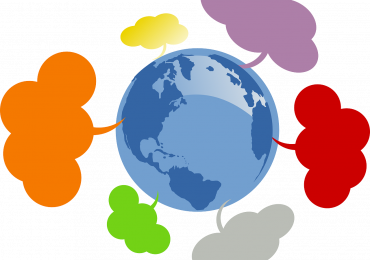Many column inches have been filled with the unfolding story of Covid-19 since its emergence in the city of Wuhan last month. There is much speculation about what it means for China itself: its own economic and political stability, and the power of the Chinese Communist Party.
This blog focuses instead on the global political and economic implications of the outbreak, and what it tells us about the robustness (or otherwise) of global systems.
Covid-19 – what we know
As of 16 February, official Chinese statistics report the number of cases as 68,500, with 1,670 deaths. There have been almost 800 cases detected outside China. Scientific modelling suggests that these figures may be low, but there is, to date, little hard evidence to back up that analysis. A research paper in The Lancet calculates that on the evidence to date the “spread rate” is 2.68 per case, which would align it with an influenza virus, and the epidemic doubled in size every 6.4 days. But there is no global pandemic yet – although this certainly should not be ruled out as a possibility.
The virus seems considerably less lethal than SARS. But the mortality rate is currently estimated to be as high as that of the Spanish Flu of 1918/19. So it is still a major potential cause of illness and death, especially among people in poor health, and the scenes in parts of China suggest that the virus, while probably manageable in countries with well-established health systems, could be disastrous for regions with inadequate health infrastructures if the virus spreads globally. If the virus has now spread widely enough to become a global event, then rapid progress on screening, treatment, and a possible vaccine will be critical for international health agencies.
In order to try to control the outbreak, China has placed some 400 million people under some form of quarantine. But China is also keen to “get back to work”, following the traditional New Year holiday period. So there are two conflicting desires: the desire to control and minimise what remains something of an unknown quantity, the new virus; and the desire to renew economic activity across China. It may be that it is too late already to contain the virus, and that it will simply have to be managed.
To use an all-too-apt English idiom, when China sneezes, the rest of the world catches a cold.
The economic consequences of Covid-19
It is estimated that the quarantine measures imposed in China will already have the effect of a 1.5% reduction in GDP for the quarter. If the measures have to continue through into March, this would become a 2.5% contraction. Many Chinese businesses, especially SMEs, would suffer serious financial difficulties.
As for China, so for the rest of the world. China now represents one sixth of the global economy. S&P (Standard & Poor) estimates that China accounts for one third of global economic growth, and is effectively the arbiter of the international economic cycle through its predominance in four channels:
-
-
- Commodities;
- Capital goods;
- Integrated supply chains; and
- Tourism
-
To illustrate, the effects of China’s slowdown have instantly been felt elsewhere:
-
-
- Taiwan’s imports fell by 17.7% in January;
- In South Korea, Hyundai has had to shut down all domestic plants because of shortages of vital components from China; other conglomerates have shut down some capacity;
- Nissan has reduced capacity in Japan, and other auto manufacturers are warning that they may have to do the same;
- Crude oil prices fell 20% from early January levels;
- One quarter of German car sales come from China, and there are tight interlinkages in supplies and components: German industrial output fell 3.5% in December (French industrial output fell 2.8%) making Europe’s industrial heartland very susceptible to a further shock;
- The Region around Wuhan specialises in electronics, so the impacts are being felt in that sector, for example Foxconn, which supplies Apple, has remained largely inactive since the outbreak of the virus was first made public.
-
One region appears (so far) to buck the trend. The USA’s S&P 500 reached an all-time peak last week. But there are experts who warn that the S&P 500 level has no rationale. The Shiller Cape Index, which measures stock prices against a 10-year rolling average of inflation-adjusted earnings indicates that the S&P 500 is in “bubble territory” – higher than it was before the Great Crash of 1929.
Looking at key components of the S&P 500, it is estimated that:
-
-
- 30% of semiconductor earnings within S&P 500 companies come from China; as do:
- 3% of technology equipment earnings;
- 9% of consumer services;
- 11% of household products; and
- 6% of cars and car components.
-
So just as the Covid-19 itself threatens to spread beyond China’s borders, so do the economic consequences. And just as coronavirus seems to have the gravest impact on the old and the sick, so the economic impacts are going to be felt in a global economy that is already not in the best of health. 2020 may be a very bumpy year indeed.
It is also worth noting that, if the virus becomes global, it may lead to anti-Chinese sentiment in at least some parts of the world – unfair though that would be – impacting on the lives of blameless ethnic Chinese people (and no doubt others who “look Chinese”) and maybe even affecting business sentiment towards dealing with China and Chinese companies.
Can the World do Better?
Covid-19 is not the first “new” disease – recent examples include avian flu, SARS and Ebola – so we should expect similar shocks in the future. Global (and national) health systems need to be attuned to the risk of emergent diseases (or new strains of familiar ones). Early warning systems and international collaboration are needed to intervene effectively and early. It is too soon to say whether the coronavirus outbreak could have been avoided – or at least minimised by effective early intervention. But a period of weeks of effective denial allowed the virus to spread rapidly in Wuhan and – seemingly – beyond. As such it may become a valuable source of learning for the future.
More specifically, the prospect of massive urbanisation in Africa and in South Asia raises questions about health provision and vigilance in those regions, where infrastructure is currently very basic. International efforts will be needed to help those regions to build capacity, to maximise sanitation and public health awareness, and educate and train more health workers for the future.
The economic impact of the virus, in such a short space of time, should alarm the world’s Governments. Have too many supply chains become virtual monopolies, with no room for contingency planning and no flex, due to over-reliance on “just in time” supply? Protectionists will argue for greater self-reliance: globalists for greater diversity of supply. But the virus is certainly exposing weaknesses in the current world economy.
Finally, is there a global economic safety net? If there is a major economic hiccup, will it precipitate a bigger crisis? Offshore dollar lending is estimated to be $18 trillion. “Official” liquidity – IMF resources, central bank swap lines and the Eurozone bailout fund – are about $3 trillion. A report by former officials of the World Bank and the Bank for International Settlements warns that “The global safety-net is too small”. How big does the safety-net need to be?
For futurists, the Covid-19 outbreak provides another useful lesson. Pandemic flu often appears in the outlying regions of the global future risk rankings. The amount of data coming out of this outbreak provides important data about spread, transmissibility, and the effect of containment measures. Equally, it shines light on those secondary effects – effects in which ripples could easily become storms. As climate change, along with the prospect of unprecedented urbanisation, make the spread of diseases and emergence of new viruses more likely, the coronavirus is important data for thinking about the future – as well as a warning about its risks.
Written by David Lye, SAMI Fellow
The views expressed are those of the author and not necessarily of SAMI Consulting.
SAMI Consulting was founded in 1989 by Shell and St Andrews University. They have undertaken scenario planning projects for a wide range of UK and international organisations. Their core skill is providing the link between futures research and strategy.
If you enjoyed this blog from SAMI Consulting, the home of scenario planning, please sign up for our monthly newsletter at newreader@samiconsulting.co.uk and/or browse our website at http://www.samiconsulting.co.uk
Image by Pete Linforth from Pixabay


